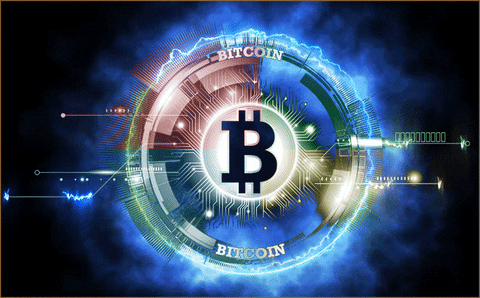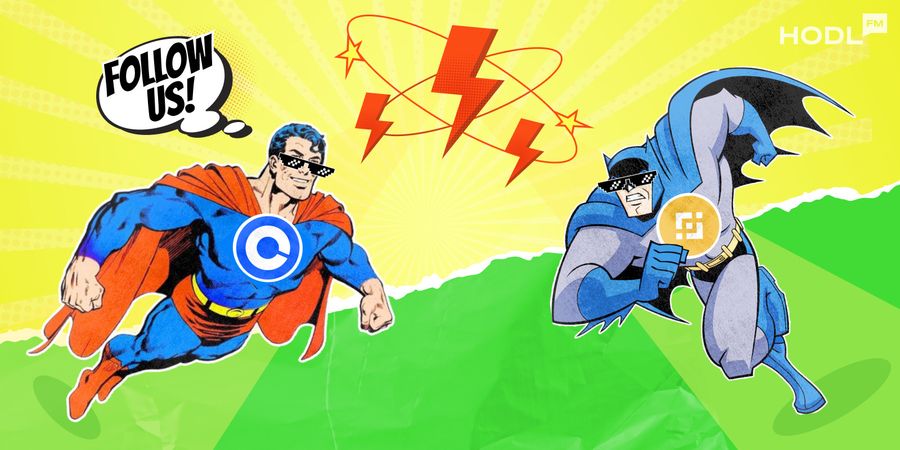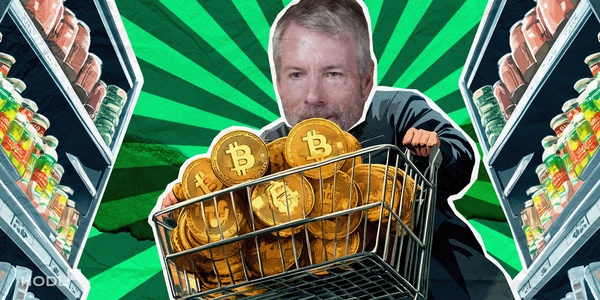“For every action, there is an equal reaction,” says Newton’s third law.
Naturally, when Bitcoin fees spike, the crypto sphere reacts with a solution.
The recent surge in Bitcoin transaction fees has got the cryptocurrency world buzzing. Users are feeling the pain in their digital wallets as fees skyrocket, making it increasingly expensive to send and receive Bitcoin. Binance, Coinbase, and other platforms are addressing the issue by integrating a second-layer solution called Lightning Network.
Spoiler alert: we will use a lot of traffic jam-related metaphors in this article.
The Bitcoin Fee Spike: Causes and Impact
So, what’s causing this fee frenzy? Well, it’s a combination of network congestion and increased demand. As more people jump on the Bitcoin bandwagon, the network is struggling to keep up. And when the network gets congested, transaction fees go through the roof. Like rush hour traffic on the superhighway. (And begins the traffic jam metaphor)
But this is not the first time Bitcoin has faced such fee spikes. Throughout its history, the network has experienced periods of high fees, leaving users frustrated and wallets lighter. However, this time around, the response has been different. The Lightning Network has emerged as a potential savior, promising faster and cheaper transactions.
- December 2017: The cryptocurrency bull run led to a significant surge in transaction fees, caused by increased demand and network congestion.
- May 2018: The ICO boom resulted in heightened transaction activity, causing a fee spike as projects utilized the Bitcoin network for fundraising.
- December 2020: Bitcoin’s price surge led to a spike in transaction fees, with increased demand and limited block space contributing to delays and higher costs for users.
- November 2022: The transaction fee of a transaction involving Bitcoin slowly increased during November 2022, as trading volume grew in the wake of the FTX collapse. The fee of 1.5 USD, however, is in stark contract to the first wave of public interest in the cryptocurrency, when the fee per transaction was over 50 U.S. dollars.
Lightning Network: A Solution to Fee Issues
So, what exactly is the Lightning Network? Think of it as a second layer built on top of the Bitcoin blockchain. It’s like a superhighway for transactions, bypassing congestion and allowing for near-instant payments. It’s the crypto equivalent of taking a shortcut to avoid traffic jams. And who doesn’t love a shortcut?
The benefits of the Lightning Network are clear. Transactions become faster and cheaper, making Bitcoin more usable in everyday life. No longer will you have to wait for a long time for your transaction to confirm or pay exorbitant fees for a simple transfer. Sounds like a game-changer, doesn’t it?
Of course, like any new technology, the Lightning Network has its challenges and limitations. Adoption is still relatively low, and scalability remains a concern. But that hasn’t stopped some major players from hopping on the Lightning bandwagon. Binance and Coinbase, two of the largest crypto exchanges in the world, have announced their support for Lightning Network transactions.
And they’re not alone. Other exchanges, such as Bitfinex, River Financial, OKX, Kraken, and CoinCorner, have also integrated the Lightning Network. It’s a sign that the industry is recognizing the need for a solution to the fee problem. The Lightning Network is gaining momentum, and it could become a major part of the Bitcoin ecosystem.
Comparing Scaling Solutions: SegWit, Bitcoin Cash, and Ethereum
But before we dive into the Lightning Network, let’s take a moment to compare it with other scaling solutions that have been proposed for Bitcoin. Segregated Witness (SegWit), Bitcoin Cash (BCH), and even Ethereum (ETH) have all entered the ring as potential solutions to Bitcoin’s scalability and fee issues. Each has its own strengths and weaknesses.
● Segregated Witness (SegWit) was introduced as a soft fork upgrade to the Bitcoin protocol in 2017. It aimed to increase the block size limit by separating the transaction signature data from the transaction data. While it provided some relief in terms of reducing transaction fees, its scalability impact has been limited, serving more as a temporary fix rather than a long-term solution.

● Bitcoin Cash (BCH), on the other hand, took a different approach by increasing the block size to accommodate more transactions. This led to lower transaction fees and faster confirmation times. However, concerns have been raised about the sustainability and centralization risks associated with larger block sizes.

● Ethereum (ETH), a separate blockchain platform, has also faced its own scalability challenges. As one of the most popular cryptocurrencies and a platform for decentralized applications and smart contracts, Ethereum has experienced network congestion during periods of high demand. While Ethereum has been working on solutions such as Ethereum 2.0 and shard chains to address scalability, these upgrades are still in progress.

Now, let’s turn our attention back to the Lightning Network. Unlike the aforementioned solutions, the Lightning Network operates as a second-layer protocol built on top of the Bitcoin blockchain. It enables fast and low-cost transactions by conducting most transactions off-chain and settling the final results on the Bitcoin blockchain. The Lightning Network offers near-instant payments and significantly reduces transaction fees, making it a promising solution for Bitcoin’s scalability and fee issues.
The Future of Bitcoin and the Cryptocurrency Industry
So, what does this mean for the future of Bitcoin and the broader cryptocurrency industry? Well, as the Lightning Network continues to evolve and gain adoption, we can expect to see a shift in how Bitcoin is used. Transaction fees will become more reasonable, making it easier for everyday transactions. The dream of Bitcoin as a widely accepted form of payment may finally become a reality.
But let’s HODL our horses a bit. The Lightning Network is still in its early stages, and there’s much work to be done. Let’s hope for the best.
Embracing the Lightning Revolution
So, dear Hodlers, buckle up and get ready for the possible positive effects of the Lightning Network integrations. The era of high fees may soon be behind us, and a new era of fast, cheap, and dare we say, “electrifying” transactions awaits. It is great to be a part of an ecosystem that produces solutions to emerging problems. Hopefully, we will be moving Bitcoin freely (free from hefty transaction fees) as it was intended with the embracement of Lightning Network.



